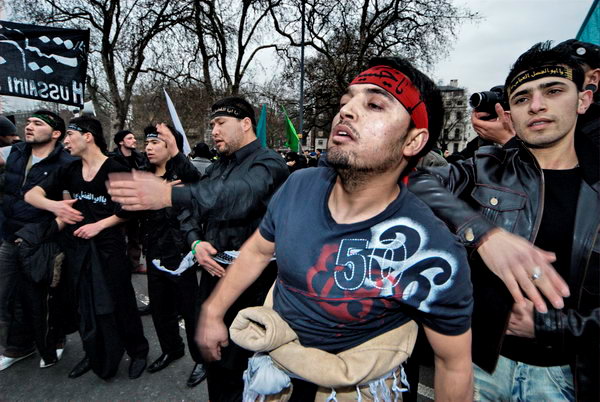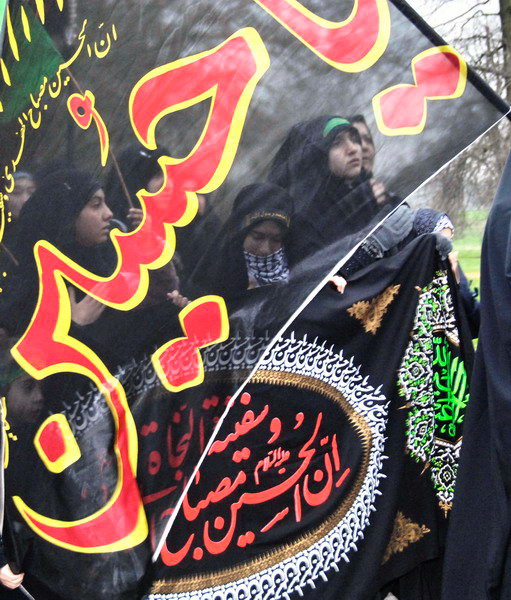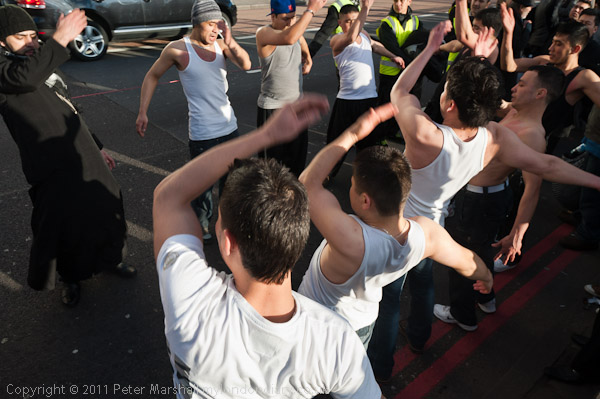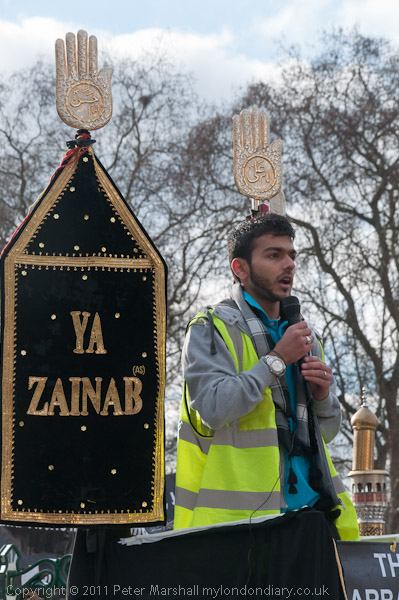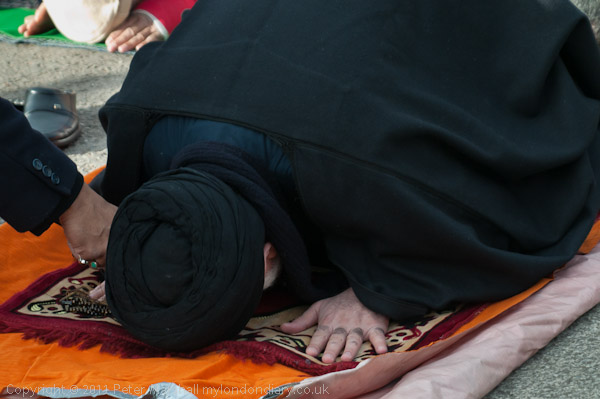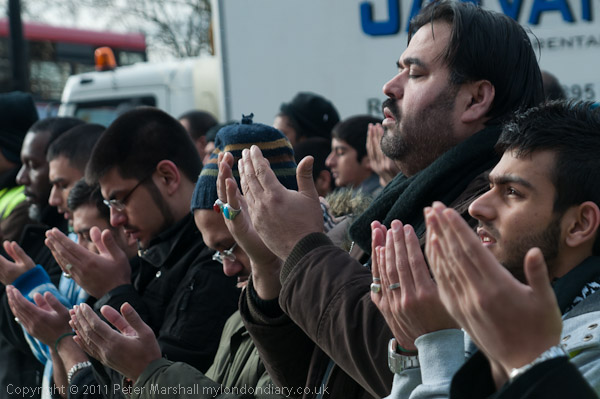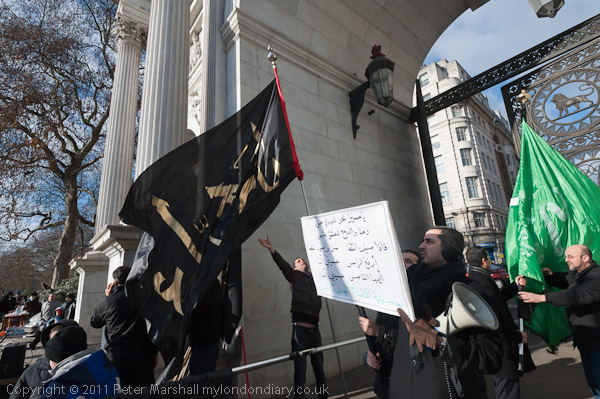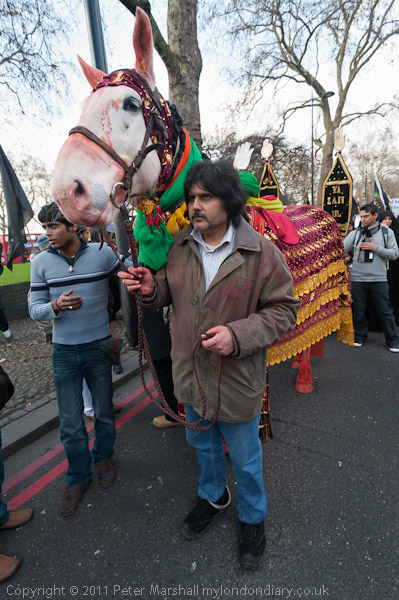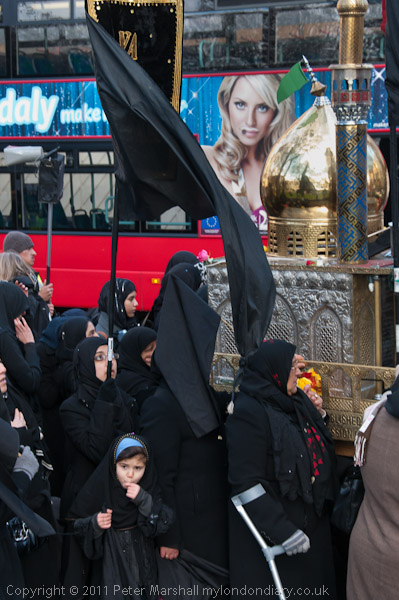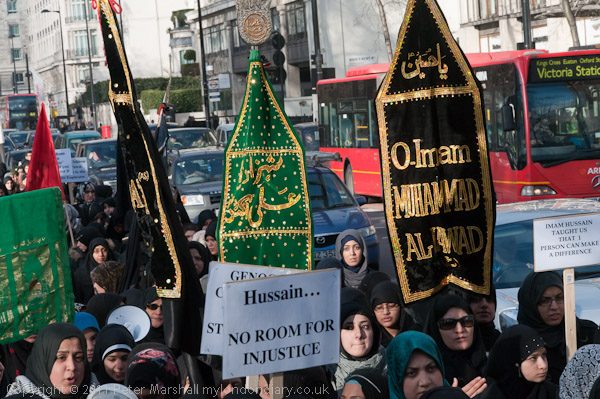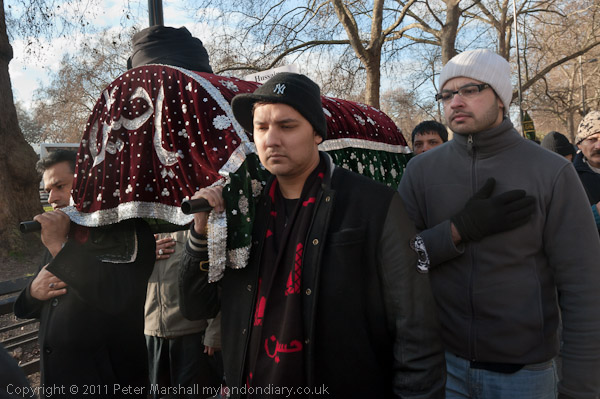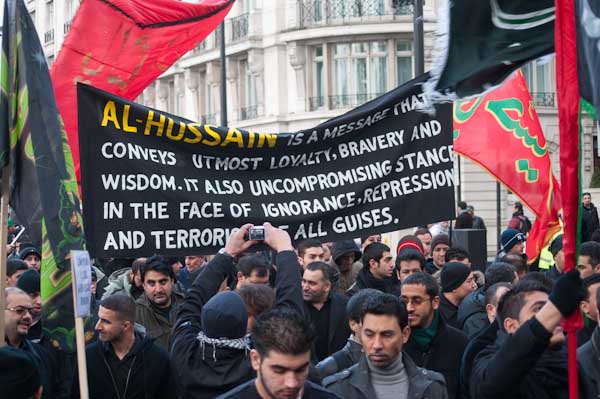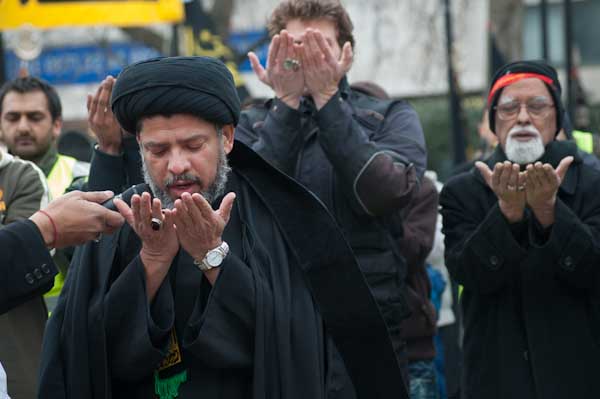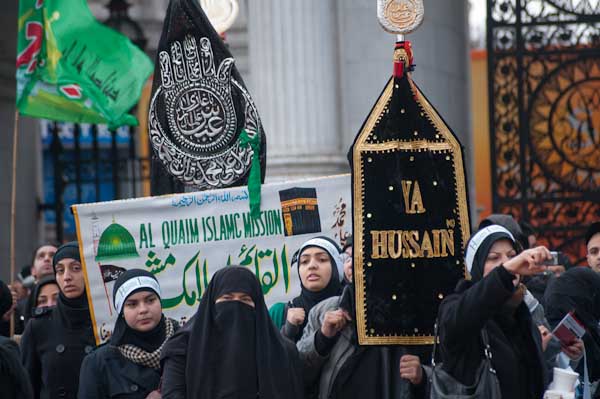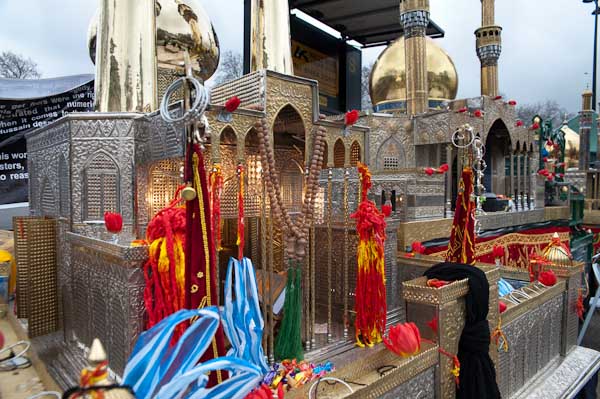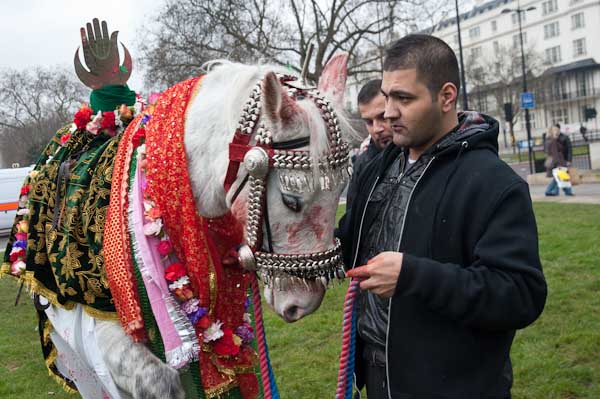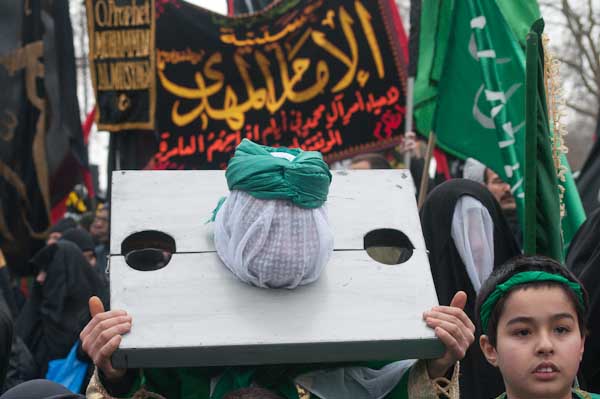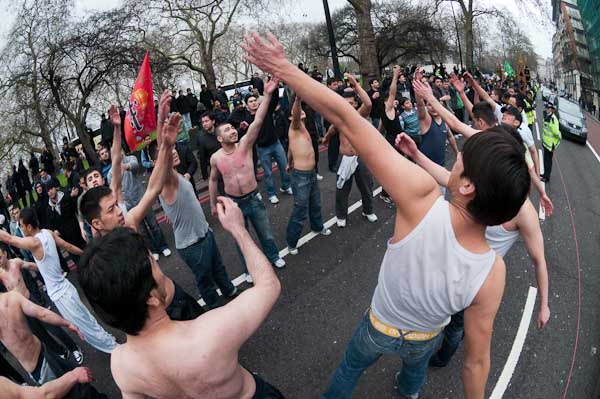Arbaeen Procession in London: On Sunday 15 January 2012 around 5000 Shi’ite Muslims gathered at Marble Arch for London’s 31st annual Arbaeen procession.
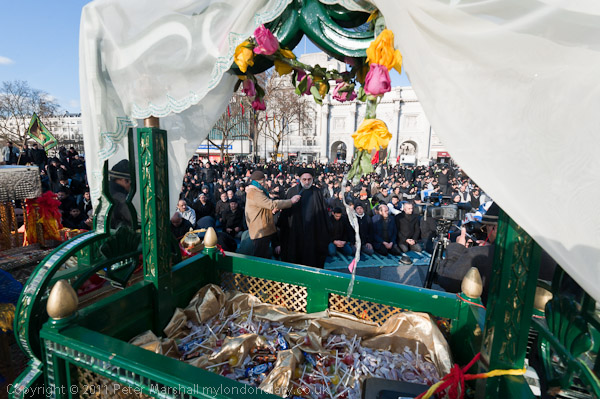
Organised by the Hussaini Islamic Trust UK, the process with its colourful flags, large gold and silver replica shrines and men and women beating their breasts in a symbol of mourning for Imam Husain went along Park Avenue.
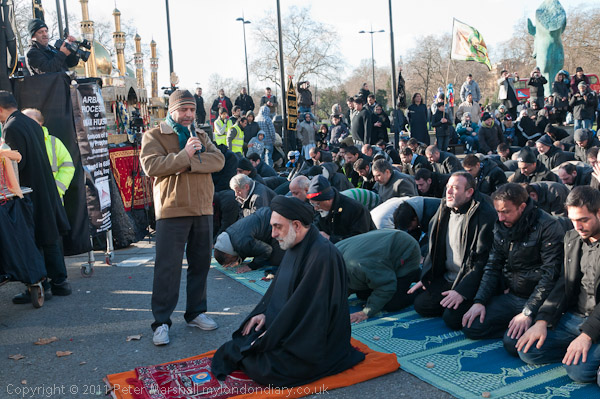
Imam Husain, the grandson of Mohammed, was killed with his family and companions at Kerbala in 680AD. Shi’ites celebrate his martydom with 40 days of mourning each year, beginning with Ashura and ending with Arbaeen.
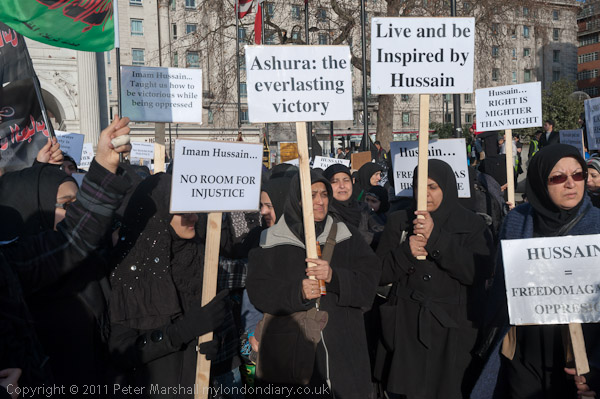
Husain is seen by Shia Muslims as making a great stand against the oppression of a tyrant and representing the forces of good against evil. Although hugely outnumbered he and his companions chose to fight on to death rather than compromise their beliefs.

Their stand remains a symbol of freedom and dignity, and an aspiration to people and nations to strive for freedom, justice and equality. Among many who have admired Husain are Ghandi, Charles Dickens and historians Edward Gibbon and Thomas Carlyle.

Arbaeen also celebrates the return of the wives and families of the martyrs to Kerbala the following year from Damascus where the had been marched as captives.

Millions now attend the annual Arbaeen event in Kerbala although it was banned when Saddam Hussein was in power.

The London procession was first held in 1982 and is the oldest Arbaeen/Chelum Procession of Imam Husain in the west. It was the first annual Muslim procession to take place in Central London and is still one of the larger annual Muslim processions in the UK, attracting Muslims from across the UK.

I arrived at Marble Arch in time for the prayers, recitation, speeches and chanting at the start of the event and to admire the three large gold and silver replicas of the shrines of Karbala; known as Shabbih, over 10 feet high and the largest in Europe,the decorated and blood-stained white horse Zuljana, the cradle remembering his 6 month old child Hazrat Ali Asghar and a ceremonial coffin before the procession began.

Both men and women on the procession beat their breasts – the men with great energy and the women much more decorously as they moved slowly down Park Lane.

The event was continuing when I left hours later.

You can read more about the procession and follow it in my pictures on My London Diary at Arbaeen Procession in London.
Flickr – Facebook – My London Diary – Hull Photos – Lea Valley – Paris
London’s Industrial Heritage – London Photos
All photographs on this page are copyright © Peter Marshall.
Contact me to buy prints or licence to reproduce.
